China and Covid19
Trending on Weibo: “Why Can’t Shanghai Residents with Covid-19 Recover at Home?”
While Chinese top experts stress that Covid patients can not recover at home, Shanghai’s centralized quarantine locations are anything but a home away from home.
Published
2 years agoon
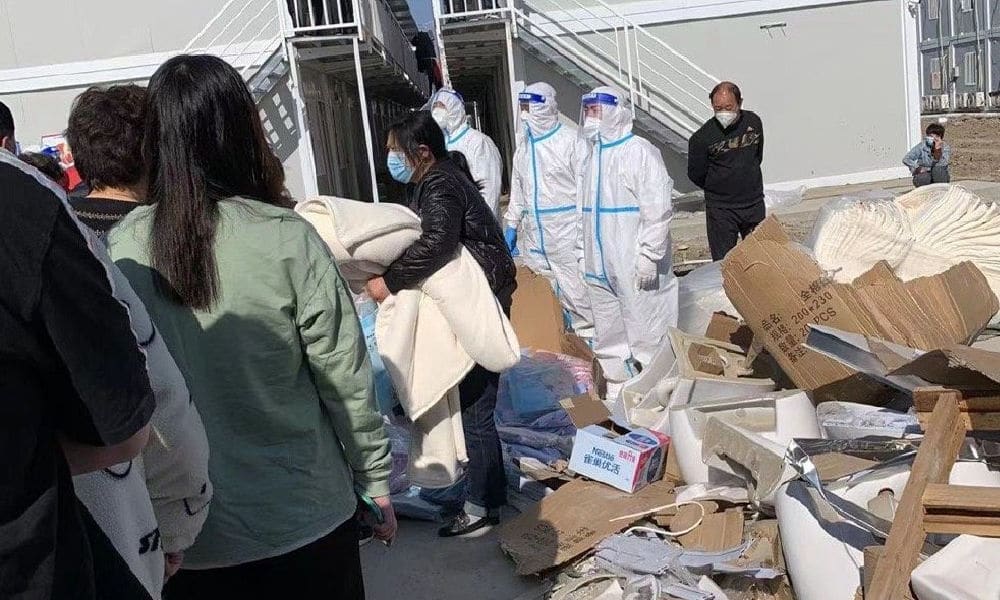
According to China’s strict Covid measures, everyone testing positive during Shanghai’s current outbreak needs to go to a centralized quarantine location. While Chinese top experts say home isolation is not an option, Shanghai residents complain about the deplorable conditions at the isolation centers.
While Shanghai is battling the worst Covid outbreak the city has ever seen and infection numbers continue to rise, today’s number one hashtag on social media platform Weibo is: “Why Can’t People Infected with Covid-19 Isolate at Home?” (#新冠感染者为什么不能居家隔离#).
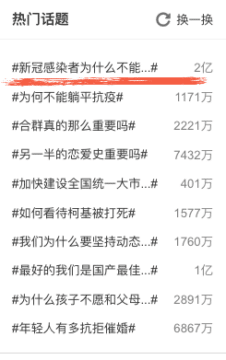
Trending topic list of Weibo, April 11 2022.
Since Shanghai’s current outbreak started on March 1, the city’s 26 million residents have been seeing stringent anti-epidemic measures, including a citywide lockdown and mass testing campaigns. This month, frustrations have been building among residents who struggle to get food, medications, and urgent medical care amid China’s dynamic zero-infection policy.
China’s so-called ‘zero-Covid policy’ is all about rapidly responding to new Covid cases, precise prevention measures, and controlling and extinguishing local outbreaks as fast as possible to avoid further spread of the virus and drastically reduce the number of people getting sick and dying. As part of this strategy, people who test positive for Covid-19 are sent to centralized facilities for a mandatory quarantine.
It’s not just people at home who have been struggling during this lockdown – many also face difficulties in getting basic medical care or adequate supplies at these centralized quarantine centers. Videos circulating on Chinese social media expose how people at some isolation facilities are fighting over food or are facing unhygienic living conditions.
The situation is Shanghai is difficult and messy, for those at quarantine sites, and for those at home. So many videos circulating online these days. This video was posted on Weibo to show the chaotic situation a quarantine location in Pudong. pic.twitter.com/E82tLCmVZ9
— Manya Koetse (@manyapan) April 9, 2022
The apparent disorganization at some quarantine facilities has triggered discussions on Chinese social media, where many are wondering why people who barely show any Covid symptoms should still be quarantined at centralized locations. Besides the fact that many of these quarantine facilities are far less comfortable than people’s own home environment (there are usually no private rooms, no showers, etc), people also fear cross-infection or re-infection due to the crowded and sometimes chaotic living conditions.
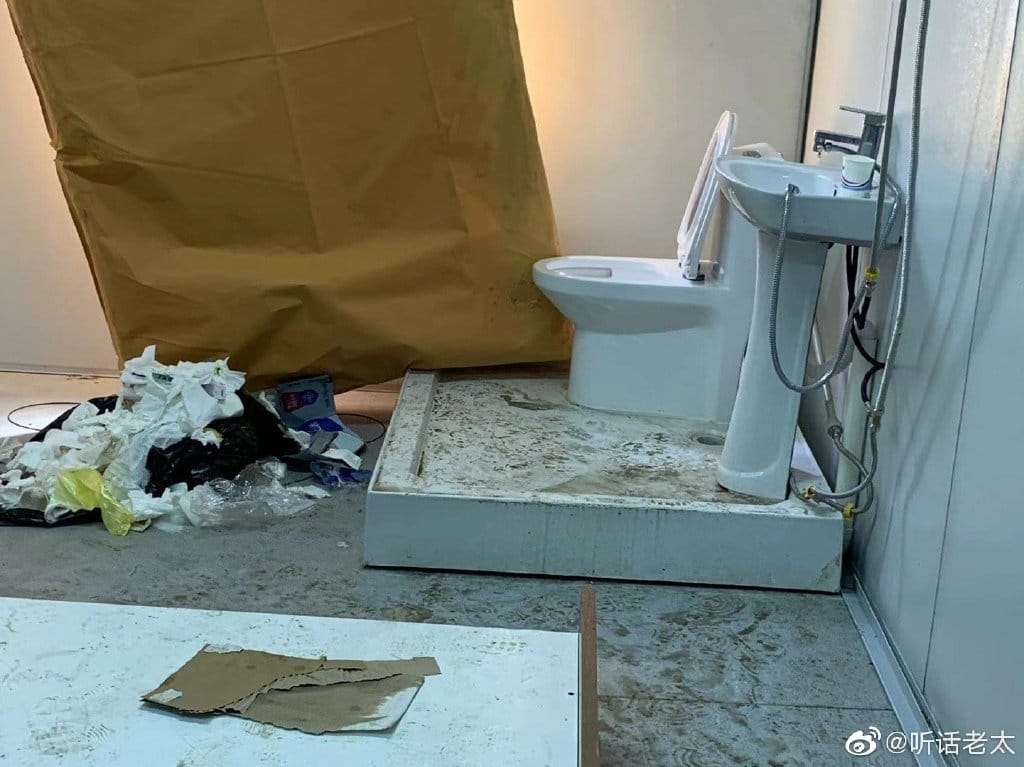
The state of the toilets at one Pudong quarantine location.
Due to a lack of medical staff, many of these facilities cannot offer adequate medical care to Covid patients who need it. Additionally, people who test positive for Covid-19 and are required to go to a quarantine location also cannot take care of pets or vulnerable family members who test negative and are left at home by themselves.
Last week, two dog owners who were taken away to a quarantine location left their Corgi dog on the streets because they feared it would starve to death if they would leave it inside their home. The dog was killed by an anti-epidemic worker shortly after. This incident also triggered massive outrage online and fuelled discussions on the need to be quarantined at a designated location rather than being allowed to stay at home.
On Weibo, the hashtag “Why Can’t People Infected with Covid-19 Isolate at Home?” received over 160 million views on Monday. The topic was initiated by the Daily Economic News (@每日经济新闻) account, which posted a video showing the renowned Chinese top epidemiologist Liang Wannian (梁万年) stressing the importance of China’s zero-Covid strategy and centralized isolation policy in light of the rapid growth in Omicron infections.
According to Liang, isolating asymptomatic or mildly ill Covid patients at home may cause further spread of the virus, especially because Omicron spreads so quickly. Even though they have mild symptoms, these Covid patients are still contagious and could spread the virus to their families and beyond. Liang also argued that patients need to be isolated at a centralized location because they can be easily monitored and treated that way.
Liang also addressed the problem of ‘people waiting for beds’ (“人等床”). Some people from Shanghai sharing their Covid journey online have expressed their frustration with being taken away for quarantine days or even weeks after they tested positive. The Shanghai-based Italian producer Alessandro Pavanello detailed his Covid experience on Instagram, where he wrote that he tested positive on March 26 but was not taken away for quarantine until April 9th. By that time, two entire weeks after his positive test, he already tested negative again but still needed to go to a centralized isolation site.
Alessandro's Shanghai Covid journey is baffling. This Italian DJ tested positive on March 26, QR code turned red on 3-28. Was told he'd get picked up for quarantine at 4-3, but wasn't picked up until 4-9 (!) – which is when he actually tested negative again. Still needed to go. pic.twitter.com/vDgnfhFpQF
— Manya Koetse (@manyapan) April 11, 2022
Liang Wannian called Shanghai’s fight against the virus an issue of systematic project management, where the problems within the process of screening, diagnosing and a rapid transfer and treatment need to be solved in order to stop continuous transmission of the virus: patients should not wait for beds, beds should be waiting for patients (“床等人”).
On Saturday, China’s largest-ever makeshift hospital opened its doors in Shanghai. The hospital at the National Exhibition Convention Center has a capacity of 50,000 beds for Covid-19 patients, and there are more than 5000 members of medical staff and 10,000 people doing logistics and supporting work (Xing & Cao 2022).
Meanwhile, more Chinese officials and experts are emphasizing the importance of sticking to the “dynamic zero-COVID strategy” as the best way forward for China. Zhang Wenhong (张文宏), head of the infectious disease department at Fudan’s Huashan Hospital, was also quoted by China Daily on Monday as saying that the pressing task for China now is to contain the epidemic in Shanghai and to cut off the transmission in communities so that normal life and production in the city can resume.
China Daily also reported that prominent Chinese pulmonologist Zhong Nanshan (钟南山) gave a lecture on Friday in which he suggested that co-existing with the virus and lifting the restrictions does not fit China’s situation since it would allegedly lead to many deaths: “In China, we should stick to the dynamic zero-COVID strategy and ease policies gradually in the future,” he said (Wang 2022, 3).
Shanghai’s mandatory quarantine implementation: lacking logic
On Weibo, thousands of people have commented on the “Why Can’t People Infected with Covid-19 Isolate at Home?” hashtag. Many agree with the centralized quarantine measures, as they fear that the virus would otherwise quickly spread in Shanghai’s densely populated areas and high-rise buildings through, for example, ventilation systems or shared facilities.
But there is also a lot of criticism. Although the Weibo post by Daily Economic News had received over 3300 replies on Monday, only a handful of comments were viewable at the time of writing. Another post containing the video received 222 replies, but none of them were displayed. “The comment section just shows ten comments, does it mean that the other 3000 people didn’t agree?”, one Weibo user wondered.
Another Weibo user described her experiences at an isolation site, posting photos of the conditions there. She writes:
“Up to now, I’ve always supported Shanghai’s active disease prevention. We have been isolated at home since early March. Ten tests we did all came up normal, but the last one unexpectedly came up positive. They took us to an isolation site. If the conditions had just been a bit better, we’d be okay with it, but this is just unimaginable. These are the facts. Over 800 people have entered this facility since April 9, their ages varying from seventy or eighty years old to babies just a few months old.
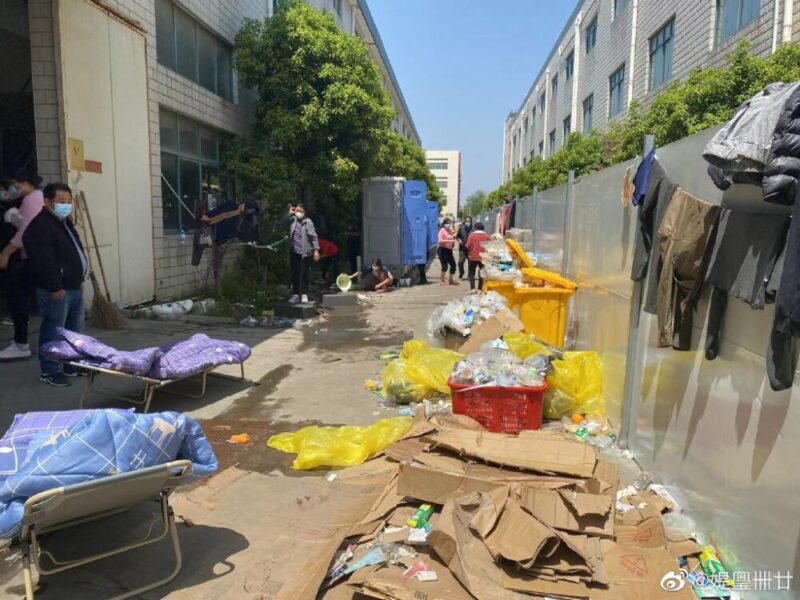
1. Inside the factory building, there are plank beds without mattresses, there are no people to clean.
2. There is no supervisor, we need to fight over our food.
3. There are not enough supplies, not even enough toiletpaper.
4. 80% of the toilets are clogged, there’s nobody to clean them.
5. There are no doctors and nobody to take care of patients with a fever.
6. There is no one to dispose of the garbage.
7. The weather’s hot, but there’s no place to shower or change clothes.
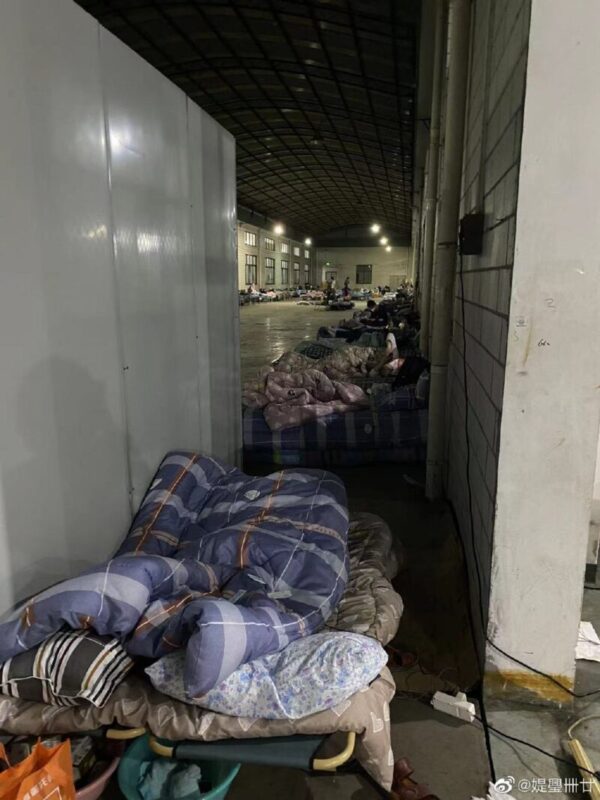
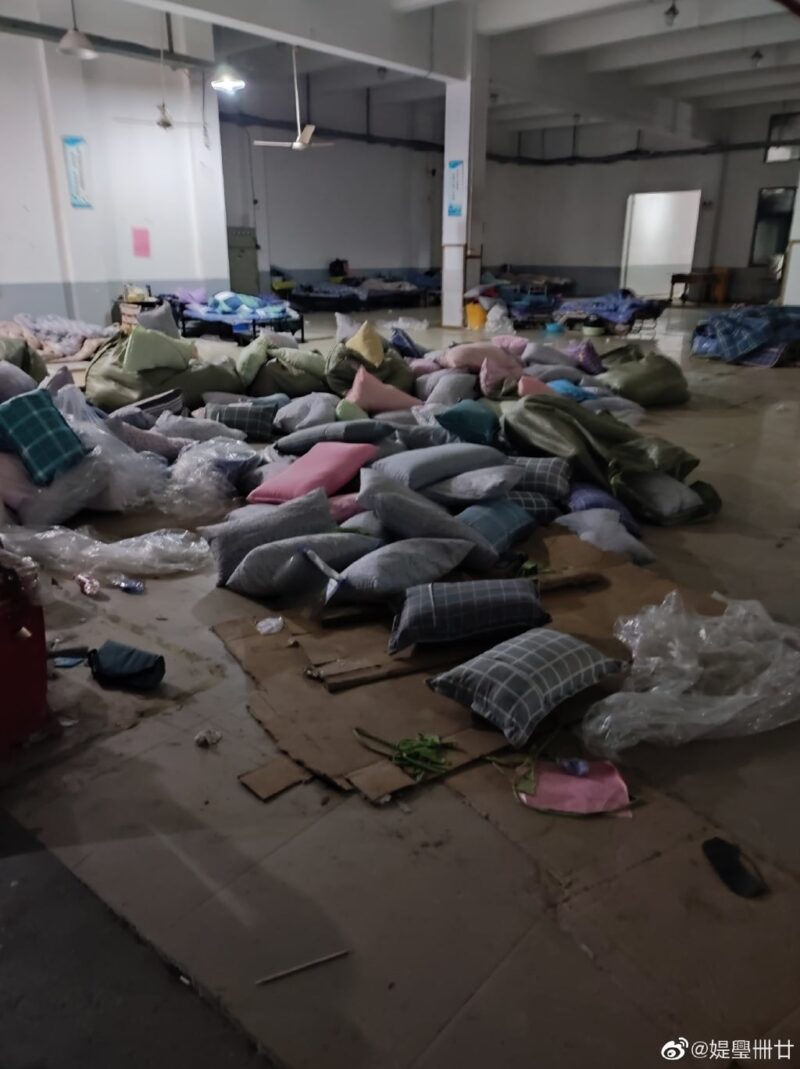
I really hope the relevant departments will pay attention to the fact that the dirty environment may cause other diseases and lead to more serious secondary hazards.”
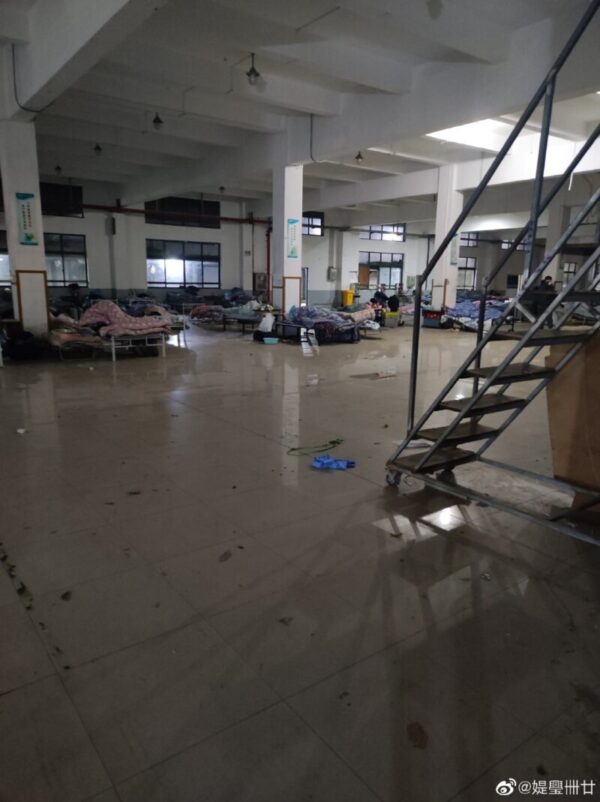
“The conditions at home are definitely much better than at the makeshift hospitals,” one Weibo blogger wrote.
There are also posts commenting on how Shanghai’s mandatory quarantine strategy implementation is devoid of logic, making people isolate who have already recovered from Covid (like the aforementioned example of the Italian man). One netizen wrote about her friend who tested positive, recovered at home by herself, tested negative multiple times, and only received a call from the Center of Disease Control days later that she had to go to a quarantine location. She asked them to come to her house to do a test, so she could show them she had recovered, but the CDC refused due to “lack of staff” and still made her go to the facility for 14 days, stuck in between Covid positive people without enough medical staff and a lack of supplies. “This is Shanghai,” the blogger wrote.
Another Weibo user also published a lengthy post about their experiences getting to a Shanghai quarantine location. Like many others, this Weibo user also tested negative again and was still required to go to a centralized isolation site without getting any information on where he would be taken or how long he would be gone.
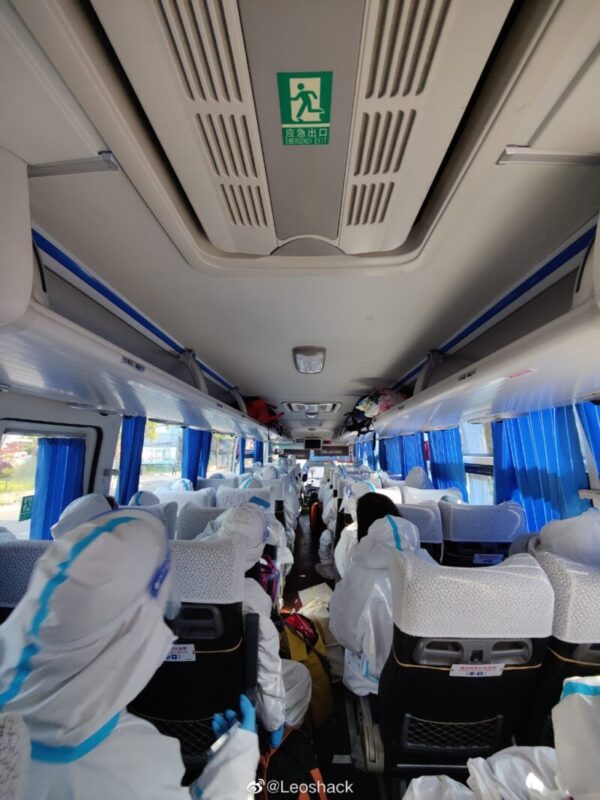
Together with many people who tested positive for Covid, he was inside a bus for hours without any access to water or toilets. When he finally reached the isolation site, he found that people who tested negative and positive were all mixed together – and that there was not a single doctor at the entire facility. Angry and frustrated, he wrote on Weibo:
“Before I put pen to paper, I hesitated if I should write down the facts of what is happening to us and if it would only bring more worry and stress to my friends and family, but after thinking twice I still think that all the people outside, no matter where you are, need to understand what we are going through and realize how different the reality is from the reports.”
For more articles on the Covid-19 topics on Chinese social media, check here.
By Manya Koetse
Get the story behind the hashtag. Subscribe to What’s on Weibo here to receive our weekly newsletter and get access to our latest articles:
References (online sources are linked to in text)
Wang, Xiaoyu. 2022. “Virus Highly Infectious, But Unlike Flu.” China Daily (Hong Kong), April 11, page 3.
Xing, Yi and Cao Yin. 2022. “Giant Makeshift Hospital to Ease Treatment Burden.” China Daily (Hong Kong), April 9, page 1.
Spotted a mistake or want to add something? Please let us know in comments below or email us. First-time commenters, please be patient – we will have to manually approve your comment before it appears.
©2022 Whatsonweibo. All rights reserved. Do not reproduce our content without permission – you can contact us at info@whatsonweibo.com.
Manya Koetse is the founder and editor-in-chief of whatsonweibo.com. She is a writer, public speaker, and researcher (Sinologist, MPhil) on social trends, digital developments, and new media in an ever-changing China, with a focus on Chinese society, pop culture, and gender issues. She shares her love for hotpot on hotpotambassador.com. Contact at manya@whatsonweibo.com, or follow on Twitter.

Also Read
China and Covid19
Sick Kids, Worried Parents, Overcrowded Hospitals: China’s Peak Flu Season on the Way
“Besides Mycoplasma infections, cases include influenza, Covid-19, Norovirus, and Adenovirus. Heading straight to the hospital could mean entering a cesspool of viruses.”
Published
8 months agoon
November 22, 2023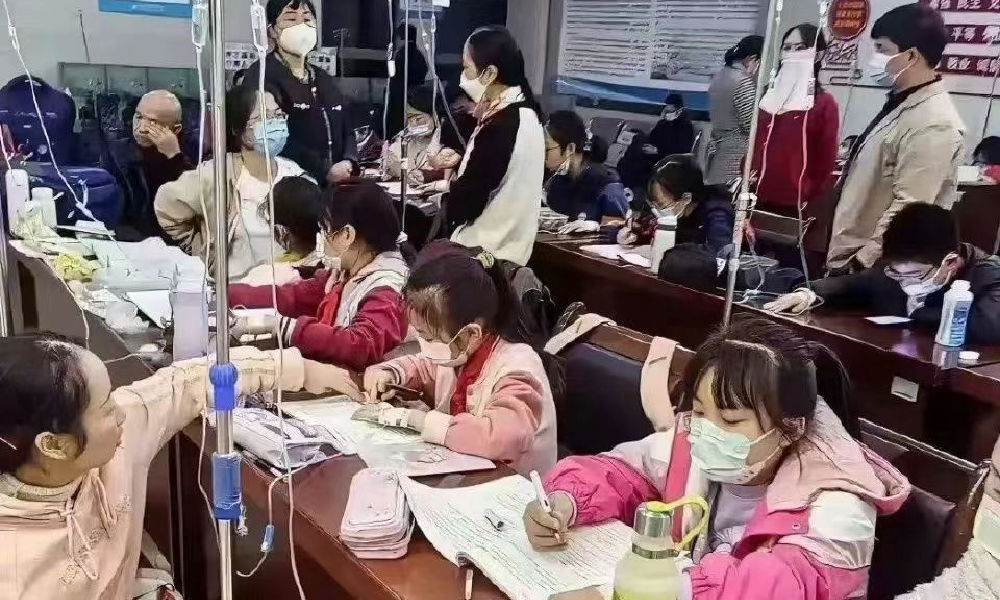
In the early morning of November 21, parents are already queuing up at Xi’an Children’s Hospital with their sons and daughters. It’s not even the line for a doctor’s appointment, but rather for the removal of IV needles.
The scene was captured in a recent video, only one among many videos and images that have been making their rounds on Chinese social media these days (#凌晨的儿童医院拔针也要排队#).
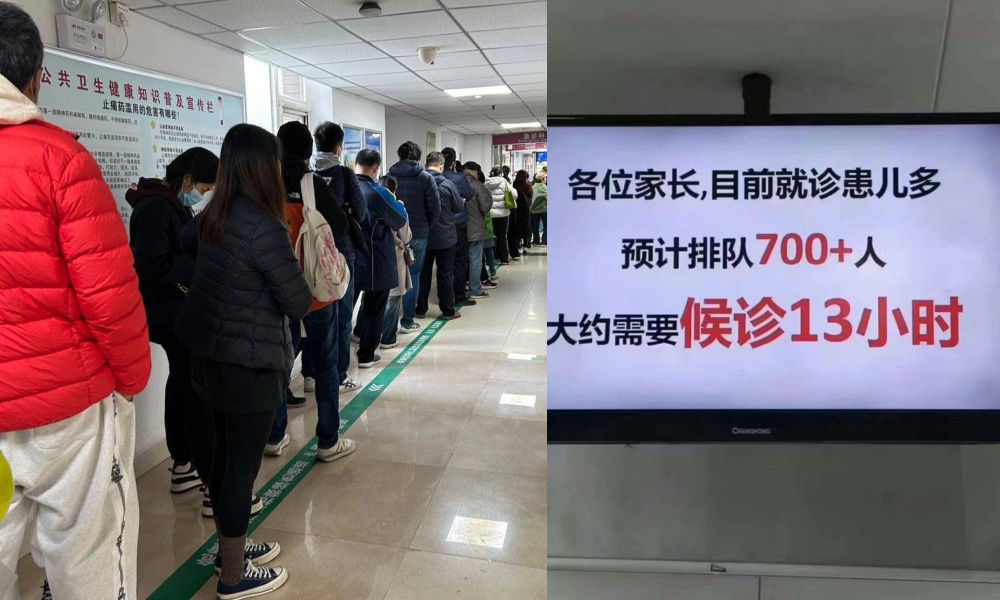
One photo shows a bulletin board at a local hospital warning parents that over 700 patients are waiting in line, estimating a waiting time of more than 13 hours to see a doctor.
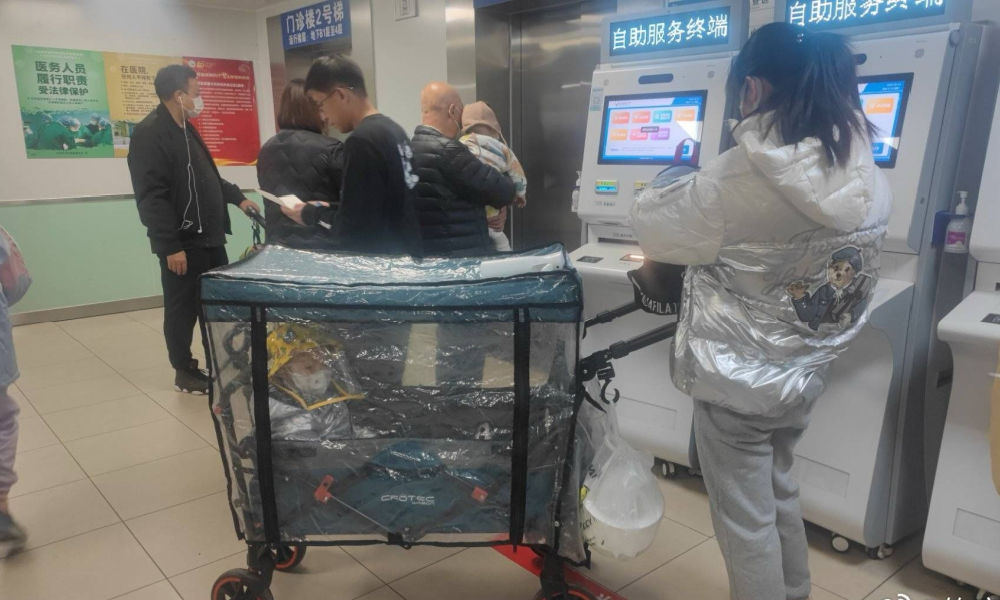
Another image shows children doing their homework while hooked up on an IV.
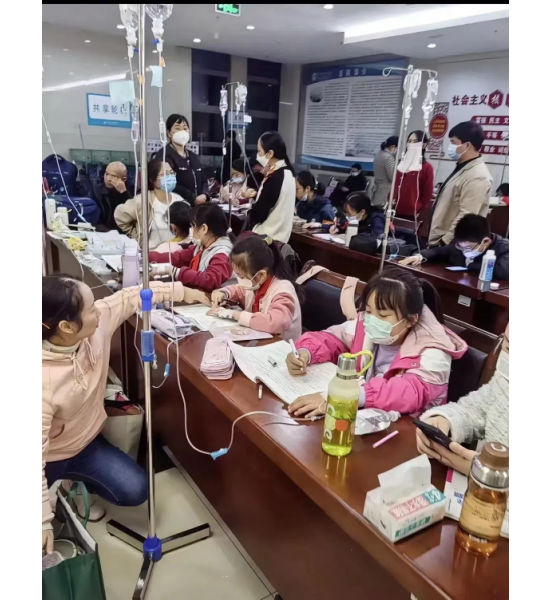
Recent discussions on Chinese social media platforms have highlighted a notable surge in flu cases. The ongoing flu season is particularly impacting children, with multiple viruses concurrently circulating and contributing to a high incidence of respiratory infections.
Among the prevalent respiratory infections affecting children are Mycoplasma pneumoniae infections, influenza, and Adenovirus infection.
The spike in flu cases has resulted in overcrowded children’s hospitals in Beijing and other Chinese cities. Parents sometimes have to wait in line for hours to get an appointment or pick up medication.
According to one reporter at Haibao News (海报新闻), there were so many patients at the Children’s Hospital of Capital Institute of Pediatrics (首都儿科研究所) on November 21st that the outpatient desk stopped accepting new patients by the afternoon. Meanwhile, 628 people were waiting in line to see a doctor at the emergency department.
Reflecting on the past few years, the current flu season marks China’s first ‘normal’ flu peak season since the outbreak of Covid-19 in late 2019 / early 2020 and the end of its stringent zero-Covid policies in December 2022. Compared to many other countries, wearing masks was also commonplace for much longer following the relaxation of Covid policies.
Hu Xijin, the well-known political commentator, noted on Weibo that this year’s flu season seems to be far worse than that of the years before. He also shared that his own granddaughter was suffering from a 40 degrees fever.
“We’re all running a fever in our home. But I didn’t dare to go to the hospital today, although I want my child to go to the hospital tomorrow. I heard waiting times are up to five hours now,” one Weibo user wrote.
“Half of the kids in my child’s class are sick now. The hospital is overflowing with people,” another person commented.
One mother described how her 7-year-old child had been running a fever for eight days already. Seeking medical attention on the first day, the initial diagnosis was a cold. As the fever persisted, daily visits to the hospital ensued, involving multiple hours for IV fluid administration.
While this account stems from a single Weibo post within a fever-advice community, it highlights a broader trend: many parents swiftly resort to hospital visits at the first signs of flu or fever. Several factors contribute to this, including a lack of General Practitioners in China, making hospitals the primary choice for medical consultations also in non-urgent cases.
There is also a strong belief in the efficacy of IV infusion therapy, whether fluid-based or containing medication, as the quickest path to recovery. Multiple factors contribute to the widespread and sometimes irrational use of IV infusions in China. Some clinics are profit-driven and see IV infusions as a way to make more money. Widespread expectations among Chinese patients that IV infusions will make them feel better also play a role, along with some physicians’ lacking knowledge of IV therapy or their uncertainty to distinguish bacterial from viral infections (read more here)
To prevent an overwhelming influx of patients to hospitals, Chinese state media, citing specialists, advise parents to seek medical attention at the hospital only for sick infants under three months old displaying clear signs of fever (with or without cough). For older children, it is recommended to consult a doctor if a high fever persists for 3 to 5 days or if there is a deterioration in respiratory symptoms. Children dealing with fever and (mild) respiratory symptoms can otherwise recover at home.
One Weibo blogger (@奶霸知道) warned parents that taking their child straight to the hospital on the first day of them getting sick could actually be a bad idea. They write:
“(..) pediatric departments are already packed with patients, and it’s not just Mycoplasma infections anymore. Cases include influenza, Covid-19, Norovirus, and Adenovirus. And then, of course, those with bad luck are cross-infected with multiple viruses at the same time, leading to endless cycles. Therefore, if your child experiences mild coughing or a slight fever, consider observing at home first. Heading straight to the hospital could mean entering a cesspool of viruses.”
The hashtag for “fever” saw over 350 million clicks on Weibo within one day on November 22.
Meanwhile, there are also other ongoing discussions on Weibo surrounding the current flu season. One topic revolves around whether children should continue doing their homework while receiving IV fluids in the hospital. Some hospitals have designated special desks and study areas for children.
Although some commenters commend the hospitals for being so considerate, others also remind the parents not to pressure their kids too much and to let them rest when they are not feeling well.
Opinions vary: although some on Chinese social media say it's very thoughtful for hospitals to set up areas where kids can study and read, others blame parents for pressuring their kids to do homework at the hospital instead of resting when not feeling well. pic.twitter.com/gnQD9tFW2c
— Manya Koetse (@manyapan) November 22, 2023
By Manya Koetse, with contributions from Miranda Barnes
Get the story behind the hashtag. Subscribe to What’s on Weibo here to receive our newsletter and get access to our latest articles:
Spotted a mistake or want to add something? Please let us know in comments below or email us. First-time commenters, please be patient – we will have to manually approve your comment before it appears.
©2023 Whatsonweibo. All rights reserved. Do not reproduce our content without permission – you can contact us at info@whatsonweibo.com.
China and Covid19
Repurposing China’s Abandoned Nucleic Acid Booths: 10 Innovative Transformations
Abandoned nucleic acid booths are getting a second life through these new initiatives.
Published
1 year agoon
May 19, 2023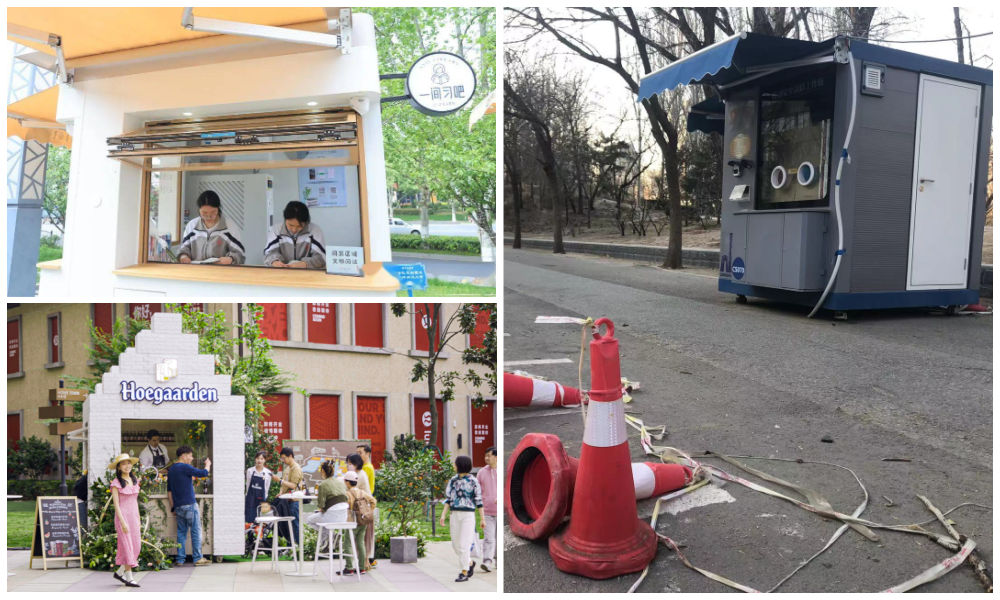
During the pandemic, nucleic acid testing booths in Chinese cities were primarily focused on maintaining physical distance. Now, empty booths are being repurposed to bring people together, serving as new spaces to serve the community and promote social engagement.
Just months ago, nucleic acid testing booths were the most lively spots of some Chinese cities. During the 2022 Shanghai summer, for example, there were massive queues in front of the city’s nucleic acid booths, as people needed a negative PCR test no older than 72 hours for accessing public transport, going to work, or visiting markets and malls.
The word ‘hésuān tíng‘ (核酸亭), nucleic acid booth (also:核酸采样小屋), became a part of China’s pandemic lexicon, just like hésuān dìtú (核酸地图), the nucleic acid test map lauched in May 2022 that would show where you can get a nucleic test.
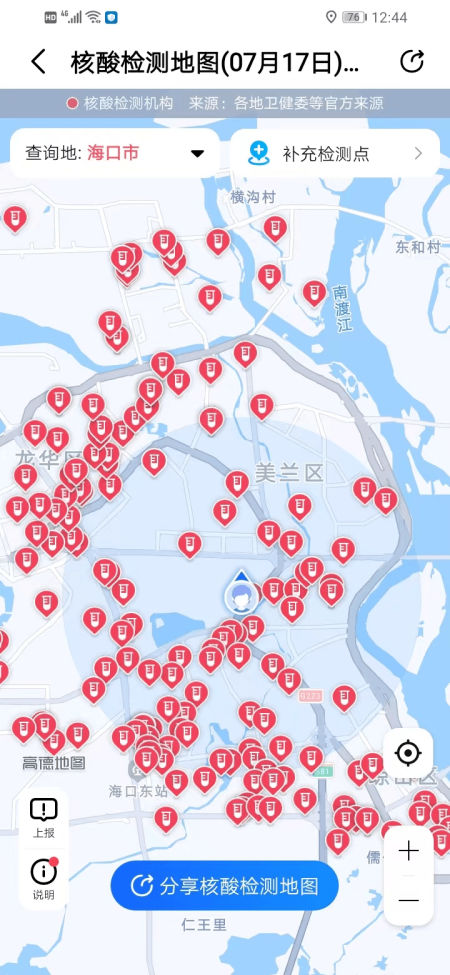
Example of nucleic acid test map.
During Halloween parties in Shanghai in 2022, some people even came dressed up as nucleic test booths – although local authorities could not appreciate the creative costume.
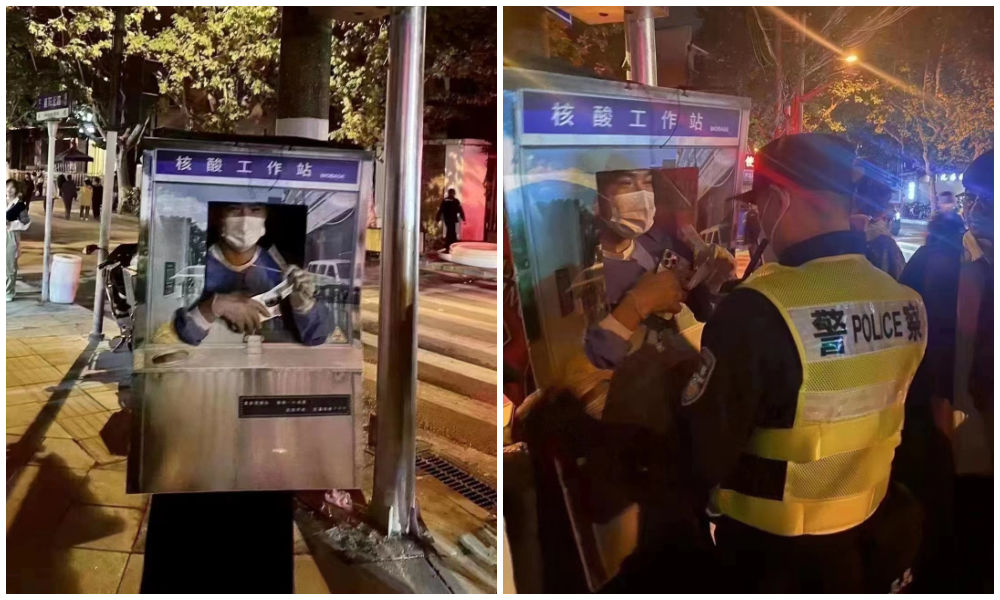
Halloween 2022: dressed up as nucliec acid booths. Via @manyapan twitter.
In December 2022, along with the announced changed rules in China’s ‘zero Covid’ approach, nucleic acid booths were suddenly left dismantled and empty.
With many cities spending millions to set up these booths in central locations, the question soon arose: what should they do with the abandoned booths?
This question also relates to who actually owns them, since the ownership is mixed. Some booths were purchased by authorities, others were bought by companies, and there are also local communities owning their own testing booths. Depending on the contracts and legal implications, not all booths are able to get a new function or be removed yet (Worker’s Daily).
In Tianjin, a total of 266 nucleic acid booths located in Jinghai District were listed for public acquisition earlier this month, and they were acquired for 4.78 million yuan (US$683.300) by a local food and beverage company which will transform the booths into convenience service points, selling snacks or providing other services.
Tianjin is not the only city where old nucleic acid testing booths are being repurposed. While some booths have been discarded, some companies and/or local governments – in cooperation with local communities – have demonstrated creativity by transforming the booths into new landmarks. Since the start of 2023, different cities and districts across China have already begun to repurpose testing booths. Here, we will explore ten different way in which China’s abandoned nucleic test booths get a second chance at a meaningful existence.
1: Pharmacy/Medical Booths
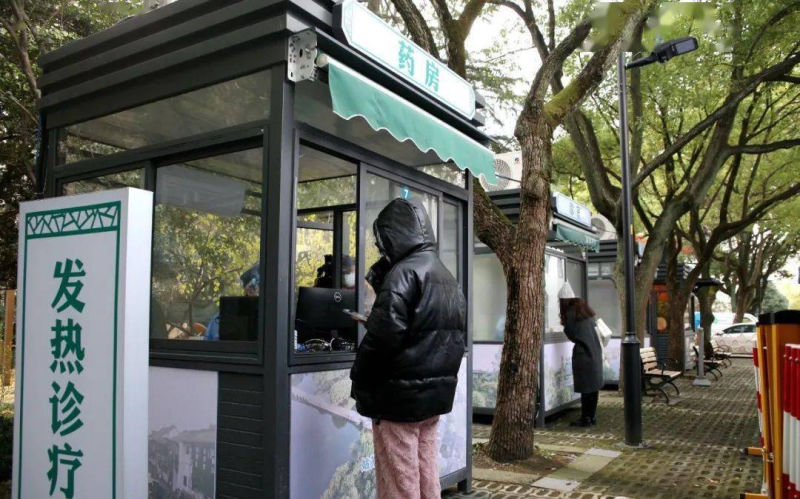
Via ‘copyquan’ republished on Sohu.
Blogger ‘copyquan’ recently explored various ways in which abandoned PCR testing points are being repurposed.
One way in which they are used is as small pharmacies or as medical service points for local residents (居民医疗点). Alleviating the strain on hospitals and pharmacies, this was one of the earliest ways in which the booths were repurposed back in December of 2022 and January of 2023.
Chongqing, Tianjin, and Suzhou were among earlier cities where some testing booths were transformed into convenient medical facilities.
2: Market Stalls
In Suzhou, Jiangsu province, the local government transformed vacant nucleic acid booths into market stalls for the Spring Festival in January 2022, offering them free of charge to businesses to sell local products, snacks, and traditional New Year goods.
The idea was not just meant as a way for small businesses to conveniently sell to local residents, it was also meant as a way to attract more shoppers and promote other businesses in the neighborhood.
3: Community Service Center
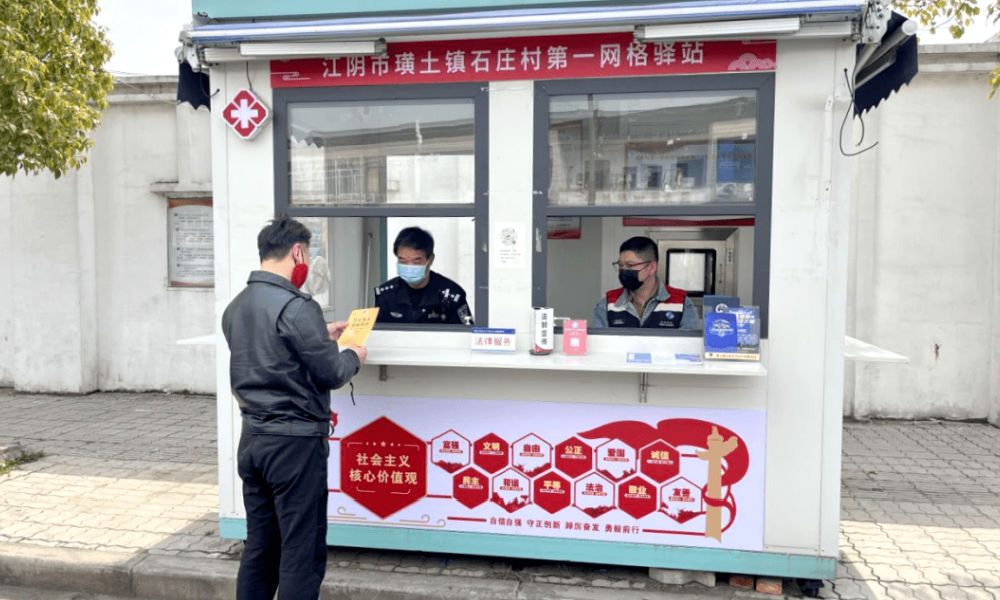
Small grid community center in Shizhuang Village, image via Sohu.
Some residential areas have transformed their local nucleic acid testing booths into community service centers, offering all kinds of convenient services to neighborhood residents.
These little station are called wǎnggé yìzhàn (网格驿站) or “grid service stations,” and they can serve as small community centers where residents can get various kinds of care and support.
4: “Refuel” Stations
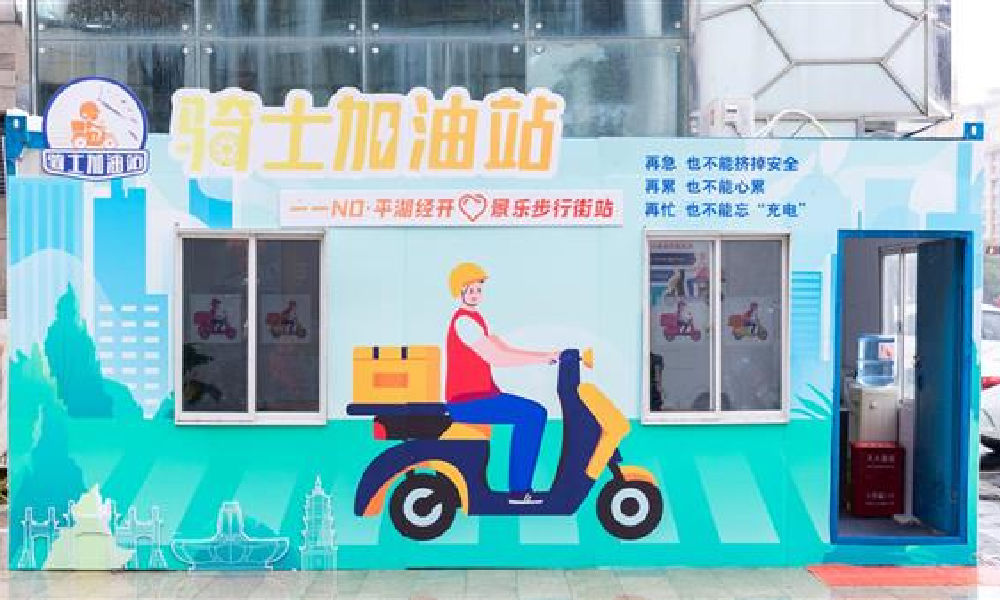
In February of this year, 100 idle nucleic acid sampling booths were transformed into so-called “Rider Refuel Stations” (骑士加油站) in Zhejiang’s Pinghu. Although it initially sounds like a place where delivery riders can fill up their fuel tanks, it is actually meant as a place where they themselves can recharge.
Delivery riders and other outdoor workers can come to the ‘refuel’ station to drink some water or tea, warm their hands, warm up some food and take a quick nap.
5: Free Libraries

image via sohu.
In various Chinese cities, abandoned nucleic acid booths have been transformed into little free libraries where people can grab some books to read, donate or return other books, and sit down for some reading.
Changzhou is one of the places where you’ll find such “drifting bookstores” (漂流书屋) (see video), but similar initiatives have also been launched in other places, including Suzhou.
6: Study Space
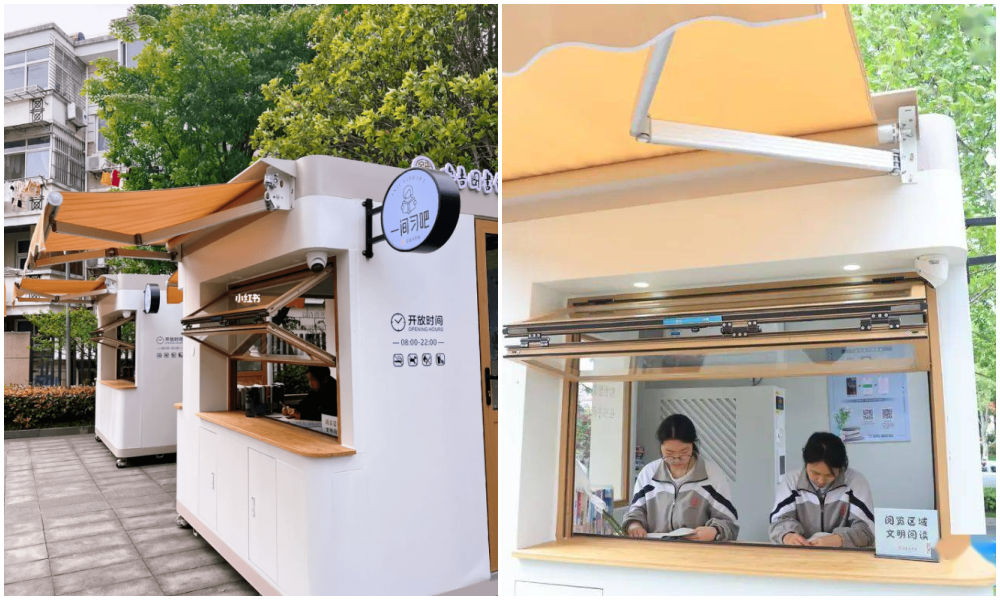
Photos via Copyquan’s article on Sohu.
Another innovative way in which old testing points are being repurposed is by turning them into places where students can sit together to study. The so-called “Let’s Study Space” (一间习吧), fully airconditioned, are opened from 8 in the morning until 22:00 at night.
Students – or any citizens who would like a nice place to study – can make online reservations with their ID cards and scan a QR code to enter the study rooms.
There are currently ten study booths in Anji, and the popular project is an initiative by the Anji County Library in Zhejiang (see video).
7: Beer Kiosk

Hoegaarden beer shop, image via Creative Adquan.
Changing an old nucleic acid testing booth into a beer bar is a marketing initiative by the Shanghai McCann ad agency for the Belgium beer brand Hoegaarden.
The idea behind the bar is to celebrate a new spring after the pandemic. The ad agency has revamped a total of six formr nucleic acid booths into small Hoegaarden ‘beer gardens.’
8: Police Box
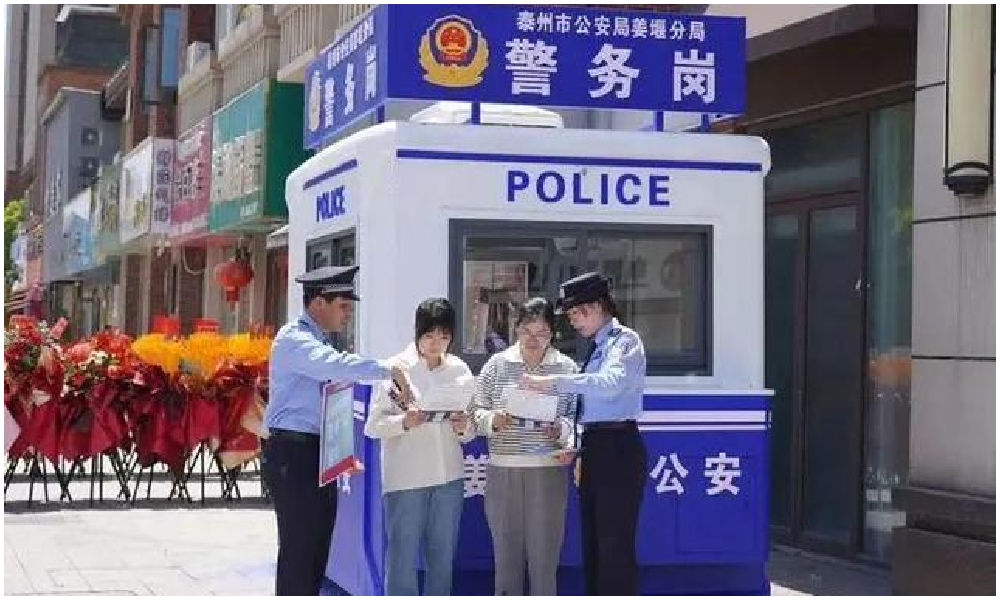
In Taizhou City, Jiangsu Province, authorities have repurposed old testing booths and transformed them into ‘police boxes’ (警务岗亭) to enhance security and improve the visibility of city police among the public.
Currently, a total of eight vacant nucleic acid booths have been renovated into modern police stations, serving as key points for police presence and interaction with the community.
9: Lottery Ticket Booths

Image via The Paper
Some nucleic acid booths have now been turned into small shops selling lottery tickets for the China Welfare Lottery. One such place turning the kiosks into lottery shops is Songjiang in Shanghai.
Using the booths like this is a win-win situation: they are placed in central locations so it is more convenient for locals to get their lottery tickets, and on the other hand, the sales also help the community, as the profits are used for welfare projects, including care for the elderly.
10: Mini Fire Stations
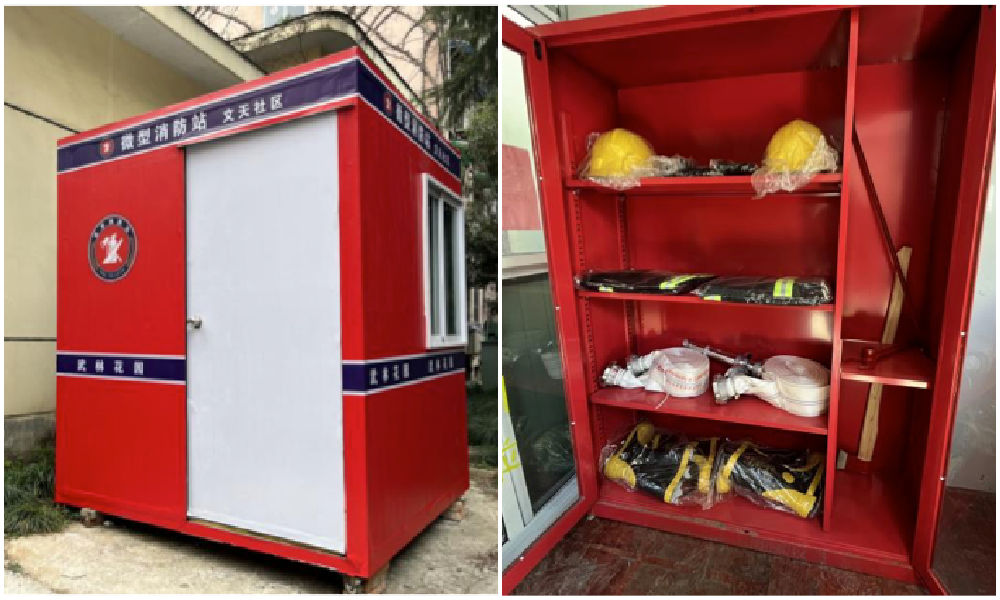
Micro fire stations, images via ZjNews.
Some communities decided that it would be useful to repurpose the testing points and turn them into mini fire kiosks, just allowing enough space for the necessary equipment to quickly respond to fire emergencies.
Want to read more about the end of ‘zero Covid’ in China? Check our other articles here.
By Manya Koetse,
Get the story behind the hashtag. Subscribe to What’s on Weibo here to receive our newsletter and get access to our latest articles:
Spotted a mistake or want to add something? Please let us know in comments below or email us. First-time commenters, please be patient – we will have to manually approve your comment before it appears.
©2023 Whatsonweibo. All rights reserved. Do not reproduce our content without permission – you can contact us at info@whatsonweibo.com.
Subscribe

Weibo Watch: The Future is Here

“Bye Bye Biden”: Biden’s Many Nicknames in Chinese

Enjoying the ‘Sea’ in Beijing’s Ditan Park

A Triumph for “Comrade Trump”: Chinese Social Media Reactions to Trump Rally Shooting

Weibo Watch: Get Up, Stand Up

The Tragic Story of “Fat Cat”: How a Chinese Gamer’s Suicide Went Viral

“Old Bull Eating Young Grass”: 86-Year-Old Chinese Painter Fan Zeng Marries 36-Year-Old Xu Meng

A Brew of Controversy: Lu Xun and LELECHA’s ‘Smoky’ Oolong Tea

Singing Competition or Patriotic Fight? Hunan TV’s ‘Singer 2024’ Stirs Nationalistic Sentiments

Zara Dress Goes Viral in China for Resemblance to Haidilao Apron

Weibo Watch: The Battle for the Bottom Bed

About the “AI Chatbot Based on Xi Jinping” Story

China’s Intensified Social Media Propaganda: “Taiwan Must Return to Motherland”

Weibo Watch: Telling China’s Stories Wrong

Saying Goodbye to “Uncle Wang”: Wang Wenbin Becomes Chinese Ambassador to Cambodia
Get in touch
Would you like to become a contributor, or do you have any tips or suggestions? Get in touch here!
Popular Reads
-

 China Insight3 months ago
China Insight3 months agoThe Tragic Story of “Fat Cat”: How a Chinese Gamer’s Suicide Went Viral
-

 China Music4 months ago
China Music4 months agoThe Chinese Viral TikTok Song Explained (No, It’s Not About Samsung)
-

 China Digital10 months ago
China Digital10 months agoToo Sexy for Weibo? Online Discussions on the Concept of ‘Cābiān’
-

 China Arts & Entertainment12 months ago
China Arts & Entertainment12 months agoBehind 8 Billion Streams: Who is Dao Lang Cursing in the Chinese Hit Song ‘Luocha Kingdom’?





